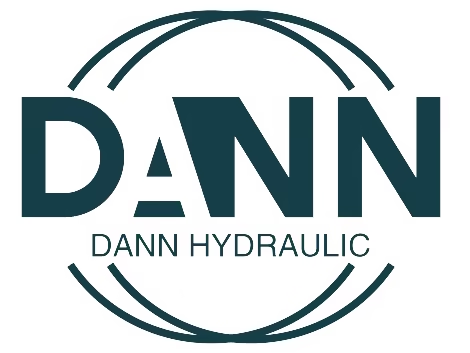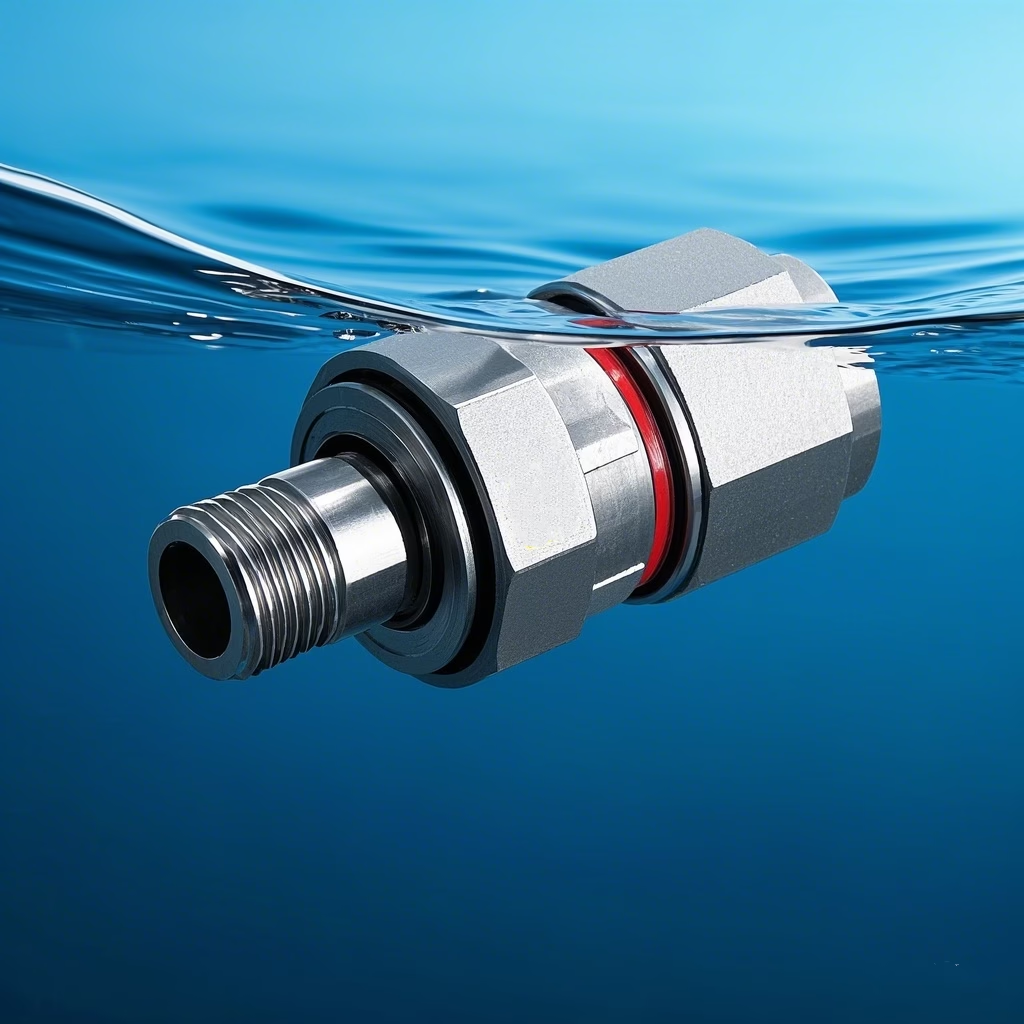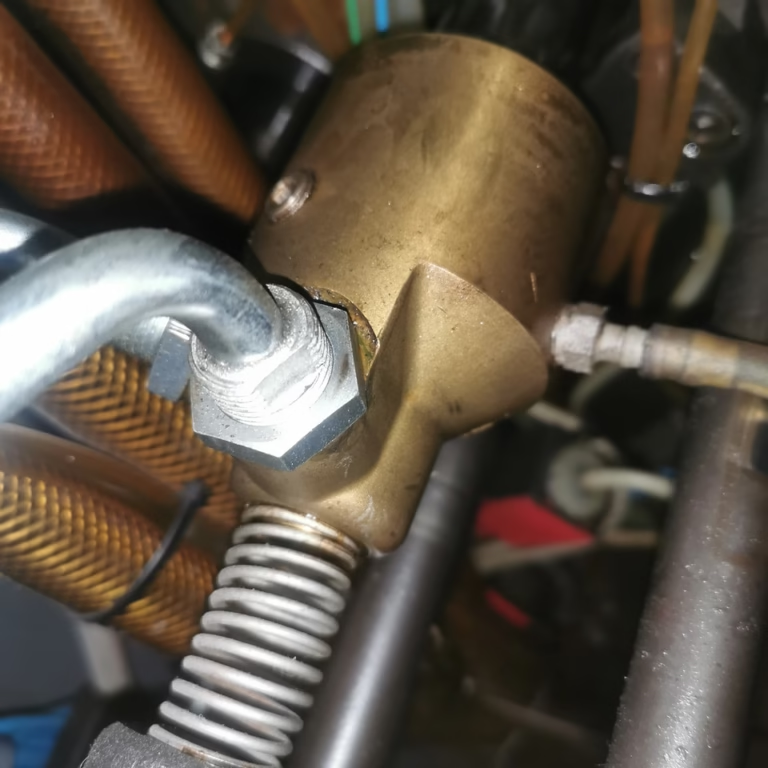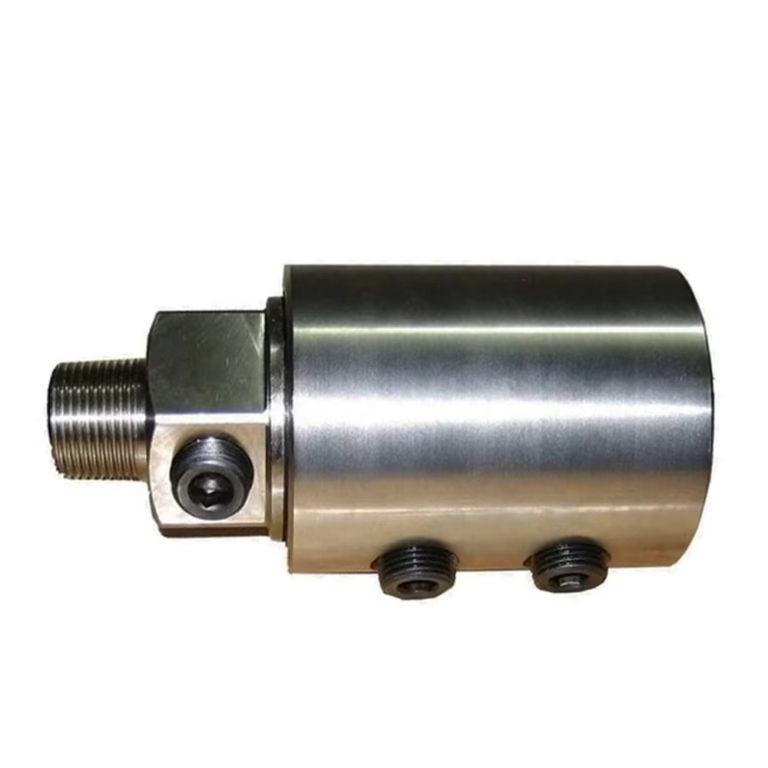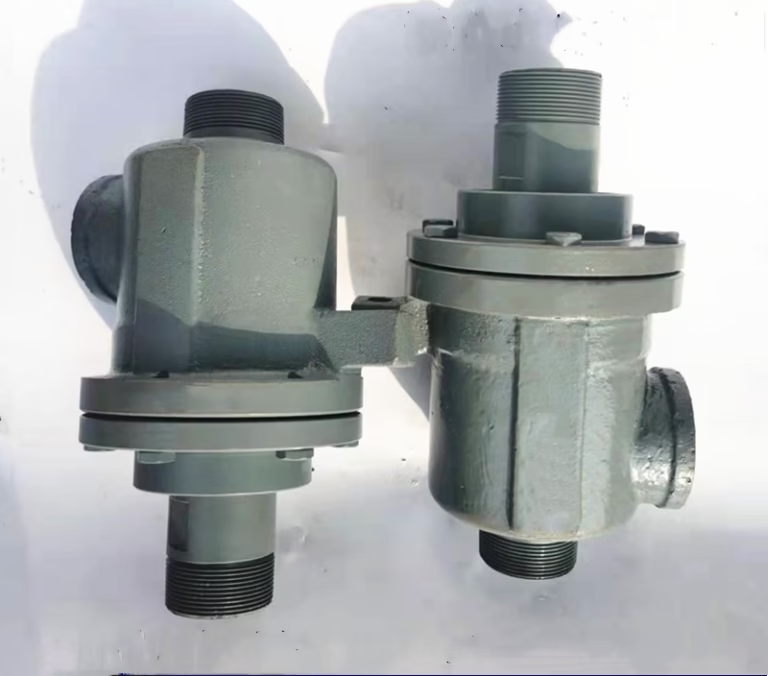What types of water rotary unions are available?
Introduction
Water rotary unions, also known as hydraulic swivel joints or fluid transfer couplings, are critical mechanical devices that enable the transfer of water, aqueous solutions, or non-corrosive fluids between stationary and rotating components in industrial machinery. With 68% of industrial equipment failures traced to improper rotary union selection (ASME 2023 Report), understanding product classifications is vital. If you’re searching for “types of water rotary unions,” this blog guide will explore their classifications, applications, design innovations, and maintenance strategies.
What is a Water Rotary Union?
Water rotary unions facilitate fluid transfer while maintaining a leak-free seal during rotation. Key components include:
1. Housing
Stationary outer body connected to the fluid source.
2. Rotor/Shaft
Rotating inner component linked to machinery.
3. Seals
Prevent leakage (e.g., O-rings, mechanical seals, or carbon graphite).
4. Bearings
Ensure smooth rotation and reduce friction.
These devices are engineered for durability, with materials like stainless steel, brass, or composites chosen based on media type, pressure, and temperature.
Types of Water Rotary Unions
Water rotary unions are categorized by design, pressure capacity, media type, and industry applications. Below is an in-depth breakdown:
Pressure-Based Classification
1.1 Low-Pressure Water Rotary Unions
Low-pressure water Rotary Unions are specialized mechanical devices used to transfer water or other fluids between stationary and rotating parts of machinery. They are essential components in various industrial applications where a rotating part requires a continuous supply of fluid, such as cooling, lubrication, or hydraulic power.
Pressure Range: 0–10 bar (145 PSI).
Applications: Car washes, agricultural irrigation, and general cooling systems.
Design Features: Lightweight, cost-effective, with buna-N or EPDM seals.
1.2 Medium-Pressure Water Rotary Unions
Pressure Range: 10–50 bar (145–725 PSI).
Applications: Food processing, CNC machine cooling, and printing presses.
Design Features: Stainless steel construction, reinforced seals.
1.3 High-Pressure Water Rotary Unions
Built to withstand high fluid pressures, these unions utilize robust materials and seals to ensure integrity under extreme conditions. They are suitable for applications where pressure exceeds normal operational ranges.
Pressure Range: 50–300+ bar (725–4,350+ PSI).
Applications: Waterjet cutting, steel mills, and high-pressure cleaning.
Design Features: Double-seal configurations, corrosion-resistant alloys.
2. Media and Material-Based Classification
2.1 Standard Water Rotary Unions
Media: Clean water (tap, deionized).
Materials: Brass, carbon steel, or aluminum.
2.2 Corrosion-Resistant Water Rotary Unions
Corrosion-resistant water Rotary Unions are special types of rotary unions designed for use in environments with corrosive media. They are commonly used in equipment that needs to transport corrosive liquids or gases or operate in harsh environments such as high humidity and salt spray. The main feature of these rotary joints is that their material and structural design are resistant to corrosion, thus ensuring long-term stable operation and extended service life.
To achieve corrosion resistance, manufacturers often select specific materials to manufacture key components of rotary joints, such as housings, shafts, and seals. Common corrosion-resistant materials include:
Stainless steel: Especially 304 and 316 grades of stainless steel, because of their good corrosion resistance and mechanical strength are widely used in rotary couples9.
Brass: While not as corrosion-resistant as stainless steel, it is still a cost-effective choice in some applications.
Engineering plastics: such as polytetrafluoroethylene (PTFE), polyether ether ketone (PEEK), etc., such materials have good resistance to chemical substances.
Ceramics: Sometimes also used to make seals, because they have excellent wear resistance and chemical stability.
2.3 High-Temperature Water Rotary Unions
These unions are engineered to operate in elevated temperature environments, incorporating special materials and cooling mechanisms.
Media: Hot water or steam (up to 200°C/392°F).
Materials: Graphite seals, heat-resistant alloys (e.g., Inconel).
3. Channel Configuration-Based Classification
3.1 Single-Channel Water Rotary Unions
This is the most basic type, allowing fluid to flow through a single channel. It is commonly used for transferring one type of fluid, such as water or oil, from a stationary source to a rotating component.
Function: Single-fluid inlet/outlet.
Pressure range: 0-250 PSI
Material options: Brass vs. Stainless Steel comparisons
Applications: Simple cooling systems, car wash brushes, Agricultural irrigation systems, paper mills.
3.2 Dual-Channel Water Rotary Unions
Features two passages allowing fluid to flow in and out from the same union, useful in cooling applications where both inlet and outlet connections needed.
Function: Simultaneous inlet and outlet (e.g., closed-loop cooling).
Applications: Injection molding, boilers.
3.3 Multi-Channel Water Rotary Unions
Unlike single-passage unions, these provide multiple channels for transferring different fluids simultaneously or individually. This design is ideal for applications requiring separate circuits or media.
Function: Multiple fluids/signals (e.g., water + air).
Applications: Robotic arms, printing presses.
4. Industry-Specific Water Rotary Unions
4.1 Agricultural Water Rotary Unions
Agricultural Water Rotary Unions are devices specifically design for use in agricultural irrigation systems that allow the transfer of water or other liquids between fixed pipes and rotating components without causing leaks or damage. These swivel joints are typically install on center pivot irrigation systems, linear move irrigation systems, and other agricultural machines that require a rotating water supply.
Features: Abrasion-resistant, handles sediment-laden water.
Applications: Pivot irrigation, spray booms.
4.2 Marine Water Rotary Unions
Marine Water Rotary Unions, or Marine water rotary joints, are devices specifically design to transport liquids or gases in the Marine environment. These swivel joints play a vital role in ships, offshore platforms, and other applications that require a transmission medium between fixed pipes and rotating components. They are capable of ensuring fluid transport while adapting to the special conditions of the Marine environment, such as high humidity, salt spray corrosion, extreme temperature changes, and constant mechanical stress.
Features: Saltwater-resistant, compact design.
Applications: Boat washing, underwater cleaning.
4.3 Food-Grade Water Rotary Unions
Food-grade Water Rotary Unions are rotary joints specifically design for the Food and beverage industry to transport liquids during production processes where high hygiene standards need to maintain. These swivels ensure that all components that come into contact with the product meet food safety standards and prevent any substances that could contaminate the product from entering the fluid path.
Features: Hygienic stainless steel, FDA-compliant.
Applications: Beverage bottling, dairy processing.
Advanced Design Innovations in Water Rotary Unions
Modern water rotary unions incorporate cutting-edge technologies to meet evolving industrial demands:
Self-Lubricating Bearings: Reduce maintenance and friction.
Modular Design: Allow customization for multi-media systems.
Teflon-Coated Seals: Enhance chemical resistance and lifespan.
Pneumatic Actuation: Enable remote control in automated systems.
Integrated Sensors: Monitor pressure, temperature, or leakage in real-time.
Selecting the Right Water Rotary Union
To choose the optimal union, consider these factors:
Choosing the right Water Rotary Union is essential to ensure the proper operation and extended service life of the equipment. Here are some key factors to consider when choosing the right water rotary joint:
1. Fluid medium
First, it must be clear what the specific medium transmitted through the rotary joint. Different media may require different types of sealing materials and internal structures. For example, if it is cooling water, you need to consider whether it contains corrosive substances water hardness, and other factors.
2. Temperature range
Select the appropriate rotary joint according to the operating temperature of the fluid. Some applications may require rotary joints to operate at extreme temperatures, and a joint made of a special material that can withstand these conditions10 may selecte.
3. Stress level
Determine the maximum operating pressure in the system and select the swivel with the corresponding pressure resistance accordingly. Too high a pressure can lead to leaks or damage, while too low a pressure can lead to unnecessary cost increases.
4. Speed
Understand the speed requirements of the equipment, as this will directly affect the design of the rotary joint and the type of bearing used. High-speed rotation usually requires a more sophisticated design to reduce friction and heat generation.
5. Connection mode
Verify the connection between the swivel and the fixed pipe. Common connection methods include threaded connection, flange connection, etc. The correct connection not only affects the ease of installation but also relates to the sealing performance.
6. Size specifications
Select the appropriate rotary joint based on the existing pipe size and equipment interface size. This includes considerations such as inside diameter, outside diameter, and length.
7. Maintenance and support
Consider the maintenance difficulty of the product and after-sales service support. Products that are easy to maintain can reduce long-term operating costs, while good after-sales support can provide timely help when problems arise.
8. Cost-benefit analysis
While price is an important factor, even more important is the value for money. High-quality products tend to have better durability and reliability and may be more affordable in the long run.
9. Safety and reliability
Choose products that meet industry standards and are certified to ensure safety and reliability.
Water types of rotary Unions Applications
Water Rotary Unions are precision mechanical devices used to transfer liquids (usually water or other coolant, hydraulic fluid, and other media) between fixed pipes and rotating components. They play a key role in many industrial areas, ensuring that fluids can be transferred from a stationary system to a rotating system without leakage. Here are some typical applications of water rotary joints:
Steel industry
In steel plants, high-pressure water rotary joints are widely used in various equipment, such as continuous casting machines, rolling machines, etc., for conveying cooling water to control temperature and prevent overheating .
Paper industry
The paper-making process requires a large amount of water to treat the pulp, and also requires the use of water rotary joints to transfer steam or hot water during the drying and cooling phases.
Printing industry
On printing presses, swivel joints are used to provide coolant to heated rollers to maintain optimal operating temperature, thereby improving printing quality and efficiency.
Plastics and rubber processing
In these industries, water rotary joints are used in mold cooling systems to help cure materials quickly and reduce production cycle time.
Food processing
In food processing equipment, water rotary joints can be used for water supply during cleaning and, in some cases, for cooling systems in food processing machines.
Machine tools
Numerical control machine tools (CNC) often require coolant to cool cutting tools and workpieces, and high-speed rotating joints are used to ensure a continuous supply of coolant.
Textile industry
In dyeing machines and other textile equipment, water rotary joints are used to provide hot water or chemical solutions to facilitate the dyeing and post-treatment of fibers.
Chemical industry
In processes involving chemical reactions or material transfer, water rotary joints made of corrosion-resistant materials may be required for the safe transfer of liquid media.
Marine and Aviation
In these two areas, swivel joints can be used to transfer fuel, lubricants, or coolants to engines or other moving parts.
Agricultural irrigatio
Some advanced irrigation systems may use rotary joints to achieve more flexible and efficient water distribution.
When selecting a water rotary joint suitable for a specific application, factors such as working pressure, speed, temperature range, and media type need to be considered. In addition, as different industrial environments have different requirements for materials and designs, customized solutions are becoming increasingly important. For example, for high-temperature or high-pressure applications, special seals and reinforced bearings may be required to ensure long-term stable operation. For the need for multi-channel transmission of different media, you can choose a multi-channel rotary joint to meet the needs. In summary, the design flexibility of the water rotary joint enables it to adapt to a variety of complex industrial requirements.
Installation and Maintenance Best Practices
Proper installation and maintenance ensure reliability:
1. Installation Guidelines
Align the union precisely to avoid stress.
Use compatible fittings and torque to manufacturer specs.
Test for leaks before full operation.
2. Maintenance Protocols
Inspect seals and bearings quarterly.
Lubricate bearings with FDA-approved grease if applicable.
Replace worn seals (average lifespan: 1–3 years).
Flush systems to prevent mineral buildup.
3. Troubleshooting Common Issues
Leaks: Check seal alignment or replace worn components.
Excessive Noise: Inspect bearings for damage.
Overheating: Ensure adequate fluid flow and clean channels.
FAQs
1. Can water types of rotary unions handle dirty water?
Yes, but choose abrasion-resistant models and implement regular cleaning.
2. What is the lifespan of a water rotary union?
3–5 years with proper maintenance; up to 10 years in low-stress environments.
3. How do I prevent leaks in water rotary unions?
Ensure correct alignment, use compatible seals, and avoid over-tightening.
4. Are there eco-friendly water rotary unions?
Yes, some models use biodegradable lubricants and energy-efficient designs.
Market Trends and Future Innovations
IoT Integration: Smart unions with sensors for predictive maintenance.
Sustainable Materials: Bio-based composites reduce environmental impact.
Miniaturization: Compact designs for portable devices and medical tools.
Hybrid Systems: Combined fluid and electrical signal transfer.
Conclusion
Water types of rotary unions are indispensable for fluid transfer in rotating machinery. By understanding their classifications, applications, and maintenance needs, you can optimize performance and reduce downtime. Whether upgrading an industrial cooling system or designing a new agricultural irrigation setup, investing in high-quality water rotary unions ensures efficiency and reliability.
